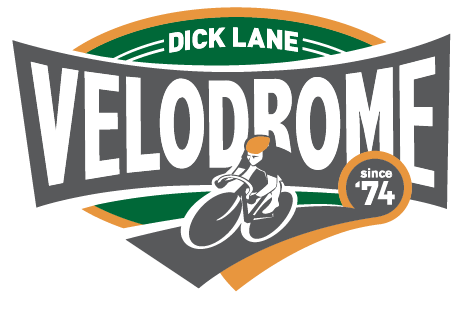Tuesday Night Racing
presented by Number 38
Tuesday night racing repeats every month.
First and Third Tuesday – Women’s, Master’s & Beginner’s (CAT D) Massed Start Racing
Massed start racing for Masters Women and Men age (35+) A/B/C, Women A/B/C, and Beginner Women and Men (D) categories. Here is what each night will look like subject to change:
The evening will start with and organized warm up followed by a variety of races. Fields may be combined if a group does not have enough riders.
7:00 PM: Warmup
7:20 PM: Scratch races
- Masters
- Women
- Beginners
7:40 PM: Race Directors Choice
- Masters
- Women
- Beginners
8:05 PM: Race Directors Choice
- Masters
- Women
- Beginners
8:25 PM: Beginners 20 lap Points Race
- Sprits every 5 laps
8:40 PM: Masters, Women and invited Beginners 40 lap Points Race
- Sprints every 10 laps
Second Tuesday – Pursuit Night
It’ll be you against the clock to see how good you really are! Pursuit Night is open for all categories of riders (including D/Beginner riders). Race distances will vary, and will include 1.5Lap TT, 3Lap TT, 6Lap IP, 9Lap IP, and 12Lap IP along with a team event. Three races possible per Tuesday. Each racer can do one TT, one IP, and team event per night. Race age and category decide distance. Racers within two years of an age group can choose a distance. Take your shot at our track records!
Third Tuesday – Women’s, Master’s & Beginner’s Massed Start Racing
Similar to the first Tuesday of the month
Fourth Tuesday – Sprint Night
Open to all categories! On this night we’ll do a 200m time trial to seed everybody before moving into some group sprints amongst riders of a similar speed. Top 18 will “qualify” for 2 or 3-up sprints while the rest will race in larger groups of up to 5 or 6 people.
Notes
2: The Track Records page under Results has DLV Lap Records. The Dick Lane Velodrome was built as a 5 laps to a mile track and predates UCI velodrome meter distances; therefore, it’s 323.4 meter measurement makes it unique. Unfortunately, this creates odd starting places for metric distance events. It is very difficult to officiate a timed race where the starting location is different then the finish location. Also, racers not starting in the middle of a straight away is awkward and not like other velodromes. The most logical answer is to use laps instead of meters. With the current belief that the DLV is 6% slower then the velodromes in Colorado Springs and Los Angeles it is very easy to estimate your metric distance time by the DLV lap time. Each year the velodrome offers a record day where racers can attempt a metric distance or hour record.
